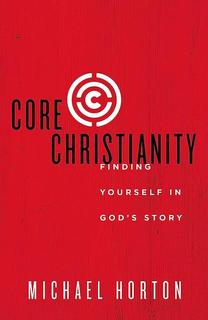In times of suffering, we sometimes cry out, “Why me?” More often, though, our cry is provoked by tragedies that happen to others loved ones and even those in distant countries who are suddenly wiped out in devastating circumstances. We mourn the death of parents and grandparents, but the death of a child or the destruction of a populated region by storm or disease strike us as random and meaningless. The usual approach to processing such events lies between two extremes.
The first is the Stoic “stiff upper lip.” Death is a natural part of life. In its raw version (ancient Stoicism, Buddhism, Christian Science, and Word-Faith teaching), this approach counsels detachment and denial. Evil, suffering, pain, and even death are simply illusions. It’s only by believing that they’re real that your soul gets weak in the knees. Be independent. Don’t rely on anyone else for your happiness. Don’t get too close to others. Then you won’t be disappointed. Of course, there are weaker versions, sometimes even bolstered by Bible verses taken out of context. The problem is that “don’t worry, be happy” is salt in the wound, as everyone who has experienced it knows.
The opposite extreme responds by drawing hasty conclusions from the way things appear to us. In this approach, it’s easy to discern from such circumstances that God is either punishing you (or someone else) or that there is no God (at least not one who cares).
The first approach never occurred to the people of Israel. The second, however, is the counsel of Job’s friends. With the exception of Eliphaz, they all have the same baseline theology: God blesses obedience and punishes disobedience, so figure out where you made a wrong turn, change course, and then your future will be brighter than your past. The whole episode will be forgotten in the radiance of the glory days to come. Now, this made more sense under the old covenant, when leprosy was a visible sign of God’s judgment. Barren wombs, fruitful vineyards turned into thorn bushes, and like experiences were threatened as God’s curses for people failing to keep his covenant in his land.
All of this changed, however, with the coming of Christ. The types gave way to the reality that is, to Christ. In this new age between Christ’s two advents, God “makes his sun rise on the evil and on the good, and sends rain on the just and on the unjust alike” (Matt. 5:45). There are no promises in the New Testament guaranteeing that the godly will be prosperous and that the ungodly will be driven from the land by the sword or wasting disease.
The same truth is discerned already in the story of Job. I won’t recount it all here, but I take the decisive moment in the story to be Job’s confession: “For I know that my Redeemer lives. And after my skin has been destroyed, yet in my flesh, I will see God whom I shall see for myself, and my eyes shall behold, and not another. My heart faints within me!” (Job 19:25-27). While Job and his friends were trying to figure out the God whose “ways are past finding out” (Rom. 11:33), the purpose of the whole episode became clear. No longer trusting in himself and relying on his own piety (as his friends encouraged), he cried out for a mediator. He realized he needed an “arbiter” who is both God and man (chapter 9). Satan meant it for evil, but God meant it for good. Something more than temporal blessing was discovered by Job that day.
With this background, we can explore Jesus’ climactic sign in John’s Gospel. This Gospel is organized around various miraculous signs identified with a specific title or self-description. Jesus heals on the Sabbath and announces himself as “Lord of the Sabbath”; he feeds the five thousand and then announces that he is “the Bread that came down from heaven.” All of these episodes provoke greater division. With the raising of Lazarus, however, the war between the serpent and the Seed of the Woman is brought to a boiling point.
Death of a Loved One
The home of Mary, Martha, and Lazarus was home base for the Jerusalem phase of Jesus’ mission. John stresses the intimacy of their friendship with Jesus as word is sent from Mary that her brother is dying: “It was that Mary who anointed the Lord” and “he whom you love” (v. 2). Martha was the tireless hospitality director, while Mary delighted most in sitting at Jesus’ feet as one of his disciples. The assumption here is that Jesus and Lazarus were so close that all Jesus needed was an announcement of his condition. Surely Jesus would come running.
Their plea was entirely understandable. But Jesus deliberately stayed away for two more days. Lazarus died. Jesus roused the disciples to join him on the journey back to the same region where their most hostile enemies were lying in wait. Jesus emphasized that he was doing everything according to his schedule. When he would go to Jerusalem this time, it would be his “hour” the time of his death on Golgotha. They thought it was a matter of building up enough steam in the outlying regions in order to bring in the kingdom to Jerusalem. But he knew what the trip to Jerusalem really meant. He would go when it was time, and that time was at hand. The death of Lazarus set everything in motion. Adding further confusion, Jesus announced Lazarus’ death with the statement, “And I am glad for your sakes that I was not there, so that you may believe; but let us go to him” (v. 15). “Lazarus is dead?” Thomas responded. “Then let’s go die with him.” It’s the bit of sarcasm we might expect from Thomas (v. 16).
They did go and Martha came out to meet Jesus. With the meager data at her disposal, she could only have been utterly discouraged and confused at the apparent disregard on Jesus’ part. Jesus, of course, had acted promptly before: in the healing of Jairus’s daughter or in the raising of the widow’s son in the middle of the funeral procession. Why not Lazarus whom he loved? And what did this say about his concern for her and her sister, who had been so devoted to his ministry?
It Wasn’t about Lazarus
For everyone except for Jesus, the story was about Lazarus. Martha expressed her confusion. Lazarus had been dead for four days and Jesus was just now showing up? What could have been going through his mind? Yet she held back her questions and instead expressed her faith: “But even now I know that whatever you ask from God, God will give you” (v. 22). In other words, she believed that he could raise Lazarus from the dead.
But Jesus was not rolling up his sleeves to raise Lazarus yet. Something larger was going on here, something of greater importance than Lazarus’ untimely death and the grief of his friends. “Your brother will rise again,” Jesus tells her (v. 23). “Martha said to him, ‘I know that he will rise again in the resurrection on the last day'” (v. 24). She may have been wondering if this was a good time for a theology exam. Of course, he will rise again on the last day. Martha was orthodox.
Up to this point, the disciples had been convinced that Jesus was sent by the Father as Israel’s Messiah. The Father gave him whatever he asked for. But now they needed to realize that Jesus was not simply a means to an end not just the greatest prophet in Israel’s history, but the incarnate God. Philip showed promise at first in his confession of Jesus, but then followed it up with the request, “Now show us the Father!” “Jesus said to him, ‘Have I been with you so long, and you still do not know me, Philip? Whoever has seen me has seen the Father. How can you say, ‘Show us the Father’?” (John 14:19). The signs were not ends in themselves, he reminded Philip and the other disciples; they were meant to lead the witnesses in faith to the reality, which was Jesus himself (v. 11).
In similar fashion, Martha was being brought by Jesus to see him as the end and not just the means: “I am the Resurrection and the Life. Everyone who believes in me, though he die, yet shall he live and everyone who lives and believes in me shall never die. Do you believe this?” (John 11:25-26). Notice that he says, “Though he die…” People would still die, but there was something larger, grander, and ultimate. This death of Lazarus was not the last word not because Jesus would turn things around for him now just so that he could live a few years longer, but because Jesus is the Resurrection and the Life. These were titles that, in a Jewish frame of reference, could only be attributed to Yahweh. So now he asked not simply whether she believed in the doctrine of the resurrection, but whether she trusted in the one standing in front of her as the source of everlasting life. “‘Do you believe this, Martha?’ She said to him, ‘Yes, Lord; I believe that you are the Christ, the Son of God, who is coming into the world'” (v. 27).
Ultimately, Jesus did not come to Bethany that day to raise Lazarus, but to announce himself as the gospel and by that announcement to create faith in the hearts of everyone who heard and who would hear, including Lazarus himself. Jesus had already indicated the purpose of the whole episode when he said that the purpose of his delay was “so that you would believe.”
Jesus Raised Lazarus
Job received his wealth and property and friends back with multiplied blessings, and Mary and Martha received back their brother. But in both cases, it was the gospel and the confession it produced that already proved that the Seed of the Woman was about to crush the serpent’s head. Death would be conquered at last–not just one person’s death, but the whole regime of sin and death.
Called out of the house by Martha, Mary also expressed her amazement at Jesus’ delay. The one who cherished every word from Jesus spoke freely: “Lord, if you had been here, my brother would not have died” (v. 32). Mary should not be blamed here but respected for having brought her doubts, as well as her faith, to the Savior.
Jesus’ own soul now began to be drawn into turmoil as he saw the mourners and recognized the wake that death leaves. Suddenly, he found himself one of the mourners. Here he was not simply a miracle-worker who walked on the sea and calmed the storms, but a man who was suddenly overtaken by troubled emotions. His own love for Lazarus and his hatred for death overwhelmed him, even though he knew what he was about to do.
The verbs John uses are toned down in English. The first verb, enebrimesato, means “to snort like a horse in anger,” but in English, it is rendered “deeply moved.” The second verb, etaraxen, means to be confused, agitated, even fearful. It’s the verb used to express Herod’s response to the wise men who informed him of Jesus’ birth (Matt. 2:3) and the response of the disciples when Jesus calmed the sea and they became more afraid of him than the storm (Matt. 13:26). In English, it is simply “troubled.” Think of the news reports of funerals in the Middle East, with mourners wailing over the casket, and you have a better picture of how Jesus was behaving. It wasn’t your average “celebration of life” that has replaced a lot of funerals today. What’s remarkable is that Jesus behaved this way even moments before he knew he would raise Lazarus. Death was such a horrifying enemy that Jesus could not fail to be overwhelmed with anger, fear, and grief all at once. It was this vicious enemy he knew he would face on Golgotha, but this time as the bearer of our curse.
This can help us understand our own experiences of suffering in many ways. As my own father lay dying in an excruciating way, he and the other patients daily had to see a giant tapestry that read, “The sunset is as beautiful as the dawn.” What rubbish to compare a maternity ward to this awful place! But this is the Stoic conception of reality the denial of death that is so much a part of our culture. Especially in Southern California, people aren’t allowed to die. They just “pass away.” At Lazarus’ tomb, Jesus overthrew this false conception of reality. Death is not a natural part of life, and his own anguish proves it.
As the biblical narrative was resolved, Martha removed the stone. Perhaps she had heard and recalled what Jesus had said, recorded in John 5:28: “For the hour is coming in which all who are in the graves will hear His voice and come forth” (John 5:28). Now she realized Jesus’ identity in a new way.
I Believe You Are the Christ
Jesus raised Lazarus, but one day there would be mourners again at his tomb. Then it would be after the resurrection of the Son of God, the dawn of the final resurrection of the dead. The division that day in Bethany was sharp. “Many believed” and many sought to kill Jesus (vv. 44-46).
Jesus’ own resurrection would be the “firstfruits of those who sleep” (1 Cor. 15), but this resurrection of Lazarus was in a sense the prelude to that great inauguration of the last day. Nobody, except for Jesus, knew why Lazarus died. And few knew why Jesus died, except for the Holy Trinity and those given to know by the Holy Spirit. Even Satan thought he had crushed the Messiah’s head. But in fact, he had only and unwittingly set into motion the death that would put the Lord’s inheritance into effect for us and make him the firstborn from the dead.
The good news in all of this is that “the last enemy is death” and “the sting of death is sin, and the power of sin is the law.” By bearing our curse, he has removed death’s sting its ultimate power over us (1 Cor. 15:56). This means that Jesus accomplished everything in his mission on earth for our complete redemption and glorification.
Death is not a portal to life. Death is not a benign friend, but a dreaded foe. It is not a natural part of life, but the most unnatural part of life you could imagine. But in his resurrection, Jesus crushed the serpent’s head, vanquishing the “last enemy” of every believer.
If the gospel disallows any Stoic interpretation of suffering, it also wreaks havoc on every attempt to interpret God’s ways in and through our suffering. Because the legal sting has been taken out of suffering and death, we cannot draw a straight line from obedience to temporal prosperity and from disobedience to punishment. Whatever God is doing, it is leading us into his story that is greater than our own or those terrible headlines of tragedy we routinely encounter. There is a story behind every story, and like Job, we don’t have the first chapter to tell us what it is. But we do have the story of Christ’s triumph, and on the basis of that utterly public and unmistakable historical act of God, we can entrust ourselves to the One who “works all things together for good” for his people (Rom. 8:28).
Adapted from Michael Horton, “Trusting God in a World of Suffering,” Modern Reformation, March/April 2014. Used by permission.






